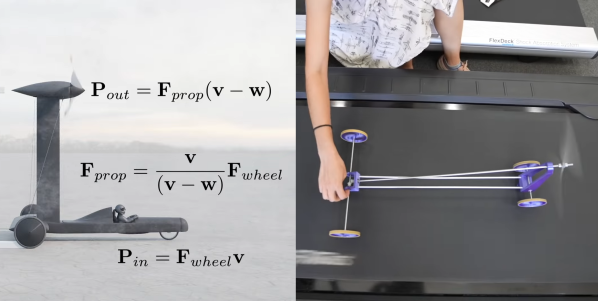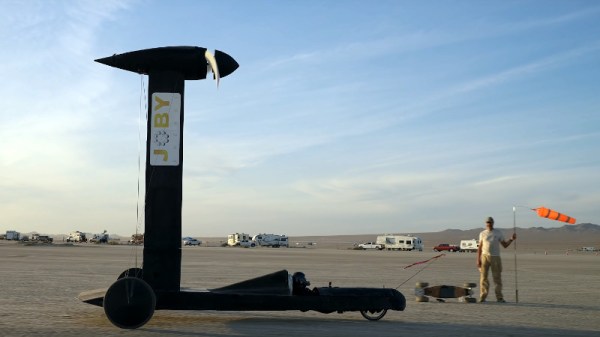By now, many of you have seen the video of [Rick Cavallaro]’s Blackbird, the controversial wind-powered land vehicle that can outrun the wind. The video has led to a high-profile $10 000 wager between [Derek Muller] aka [Veritasium] and [Alex Kusenko], a professor of physics from UCLA. [Veritasium] won the wager with the help of a scale model built by [Xyla Foxlin], and you need to watch the videos after the break for some excellent lessons in physics, engineering, and civilized debate.
After seeing [Veritasium]’s video on Blackbird, [Professor Kusenko] contacted him and said the performance claims and explanation were incorrect. After a bit of debate [Veritasium] proposed a wager on the matter, which [Professor Kusenko] accepted, and it was made official with a written agreement witnessed by [Neil deGrasse Tyson], [Bill Nye], and [Sean Carrol]. From the start, it was agreed that the entire debate would be made public.
[Professor Kusenko] made a very thorough and convincing argument, backed by calculations, against the claims in the video. He claimed the observations were due to a combination of gusty winds, a vertical wind gradient. He was convinced and that the vehicle would not be able to maintain a speed higher than the wind, directly downwind. By [Veritasium]’s own admittance, his original video could have contained more details and proof of performance claims of the Blackbird vehicle. He added these to the latest video and included two model demonstrations. The model that brought the concept home for us is at 13:46 in the video, and substitutes the propeller for a large wheel being driven by a piece of lumber being bushed across it. The second model, built by [Xyla Foxlin] was designed to demonstrate the concept on a treadmill. The 4th version of [Xyla]’s model was the first to be successful after she found out from [Rick Cavallaro] that the key design detail is the Vehicle Speed Ratio, which must be 0.7 or less. It is the pitch of the propeller divided by the circumference of the driven wheel, assuming a 1:1 gear ratio. All the 3D files and details are available if you want to build your own downwind cart. Continue reading “$10 000 Physics Wager Settles The Debate On Sailing Downwind Faster Than The Wind”













